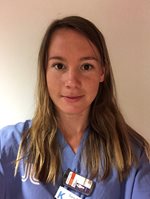The sixth ESTRO physics workshop, which was sub-titled Science in Development, was held over two sunny autumn days in Torino, Italy. Introduced five years ago, these workshops focus on different topics, and the participants are encouraged to be highly active in both sharing their experiences and partaking in discussions.
As a participant in the workshop that discussed Methods to combine and sum external beam and brachytherapy dose distributions, I have to say that the commitment of the group did not disappoint. The agenda and consequent discussions during these two days were very busy. The workshop started with a short introduction from each of the 22 participants, briefly summarising our different backgrounds and research in the field. The participants were clinicians, researchers and vendors from all over the world; medical physicists dominated the group. Four invited speakers – Taran Paulsen Hellebust, medical physicist and associate professor at Oslo University Hospital, Norway; Joakim Jonsson, medical physicist and researcher of Umeå University, Sweden; Bradley Pieters, radiation oncologist at the Amsterdam University Medical Centers, The Netherlands; and Georgina Fröhlich, medical physicist at the National Institute of Oncology in Budapest, Hungary – gave lectures that guided us deeper into the topic.
Aside from the lectures, each clinician explained a clinical case through which they presented their clinical strategies of combining dose distributions from external beam radiotherapy (EBRT) and brachytherapy (BT). On the other hand, the participating vendors presented their respective companies’ proposed solutions and current developments.
It became evident from group members’ statements that the clinical centres that were represented had all taken to heart the findings of the EMBRACE studies, and the recommendations from GEC-ESTRO on dose reporting and direct (equivalent dose in 2Gy fractions) additions of EBRT and BT doses that are given to cervical cancer patients. However, during the workshop, participants discussed the drawbacks of supposing that dose distribution from EBRT is homogenous, when a simultaneous integrated boost is often delivered nowadays. We also talked about the problems of ignoring the intermediate- and low-dose volumes (which are of interest when considering toxicity). This happens when only the dose to the maximally exposed 2cm3 of the organs at risk (D2cm3 to the OARs) is reported. It seemed from participant reports that doses to other treatment sites were not summed in this way in clinics.
It became evident that the use of deformable image registration (DIR) could solve many of the issues that direct addition comes with, as it approaches the dose combination voxel by voxel. Nevertheless, DIR has its disadvantages, the biggest being the introduction of uncertainties due to individual management of the registration process. DIR is achieved through the use of algorithms that are complex yet not advanced enough to take into consideration large and complicated deformations of the anatomy, including the anatomical displacement caused by the insertion of BT applicators.
In order to get reliable results from DIR, it is important to use the appropriate registration method and perform the registrations in multiple steps. An intensity-based approach is generally not applicable in the registration of EBRT and BT image sets; a structure-based algorithm performs better. However, for the structure-based registration to perform well, the participants pointed out that the anatomical structures had to be well defined in the BT image sets. Some group members said they would like to have the applicator in the dose planning system exported as a structure to drive the registration in the DIR software.
The participants concluded that a working group should be created that would consider the different aspects – both possibilities and difficulties – that had been brought up in this workshop. Such a group would compose a “wish list” that summarised, for example, the main features that were wanted as part of the DIR software and dose planning systems. Meanwhile, the vendors are in need of clinical datasets. The clinics should request prospective consent from patients in order to gather enough treatment data to keep a database, preferably with open access. This would let the working group investigate different algorithms that used the same DICOM data and the results and conclusions could be shared across the radiotherapy community. Eventually, an objective of the working group would be to produce guidelines on best practice in dose summation, with consideration of different treatment sites and different complexity levels.

Sara Bornedal
Medical physicist
Karolinska University Hospital, Sweden